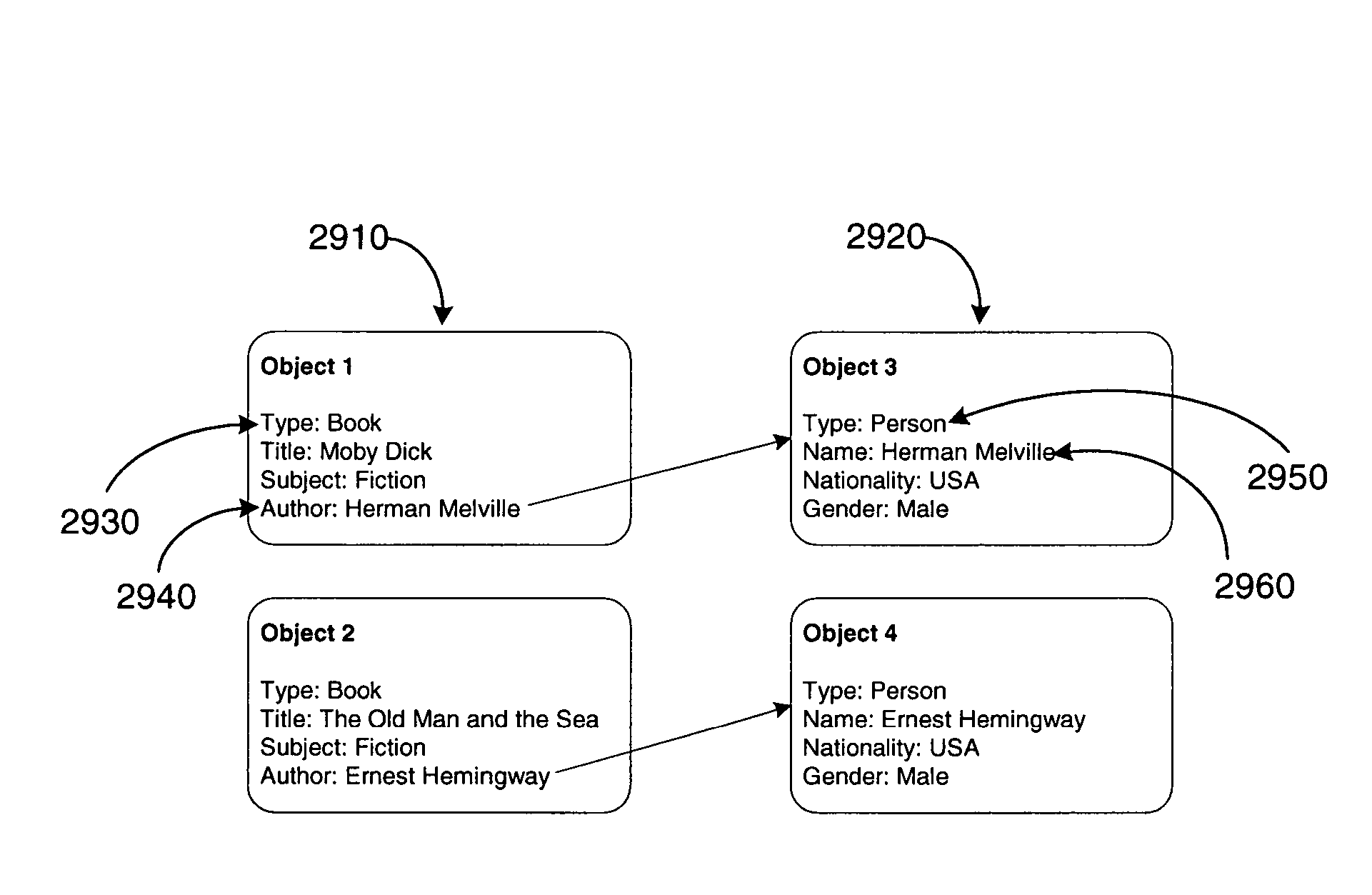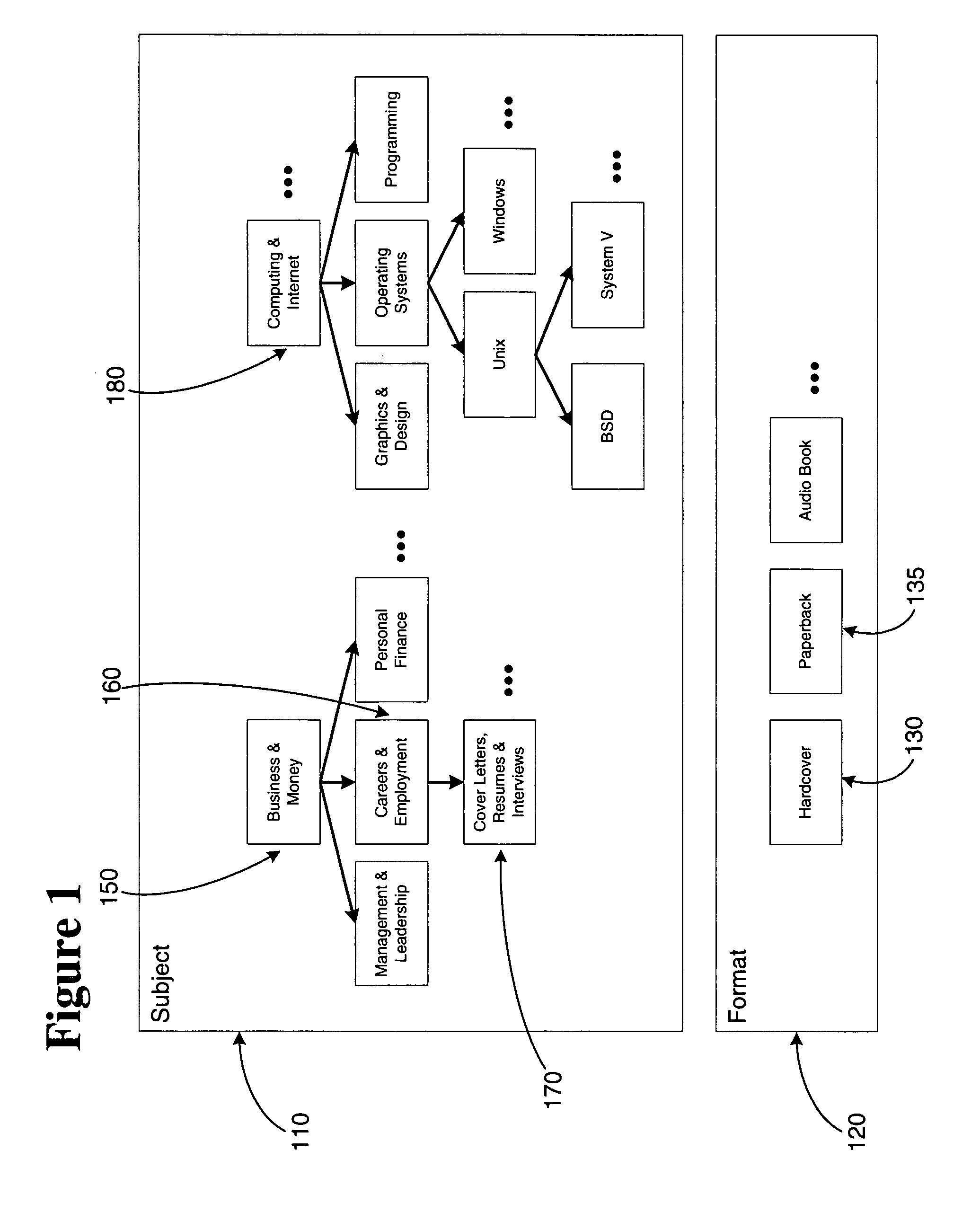System and method for information retrieval from object collections with complex interrelationships
a technology of information retrieval and object collection, applied in the field of information navigation and retrieval systems, can solve the problems of not only increasing difficulty in identifying materials relevant to search, but also increasing difficulty in identifying materials, and failing to address the need to search databases with more complex structur
- Summary
- Abstract
- Description
- Claims
- Application Information
AI Technical Summary
Benefits of technology
Problems solved by technology
Method used
Image
Examples
Embodiment Construction
[0080] The present invention includes several aspects of a data-driven information navigation system. The navigation system of the present invention includes features of a knowledge base, a navigation model that defines and enables computation of a collection of navigation states, a process for computing navigation states that represent incremental refinements relative to a given navigation state, and methods of implementing the preceding features.
[0081] The present invention uses a knowledge base of information regarding the collection of materials to represent the materials and the relationships among them. Facets
[0082] The knowledge base includes a collection of facets. Each facet consists of a collection of related values that may be used to describe a subset of the objects to be stored in the knowledge base. For example, the knowledge base for the books domain might include facets such as Subject and Publication Year to describe books directly, along with Nati...
PUM
 Login to View More
Login to View More Abstract
Description
Claims
Application Information
 Login to View More
Login to View More - R&D
- Intellectual Property
- Life Sciences
- Materials
- Tech Scout
- Unparalleled Data Quality
- Higher Quality Content
- 60% Fewer Hallucinations
Browse by: Latest US Patents, China's latest patents, Technical Efficacy Thesaurus, Application Domain, Technology Topic, Popular Technical Reports.
© 2025 PatSnap. All rights reserved.Legal|Privacy policy|Modern Slavery Act Transparency Statement|Sitemap|About US| Contact US: help@patsnap.com



